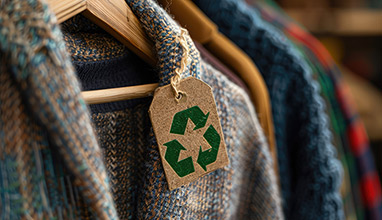Metal Braces: A Real-World Guide from One Smile to the Next
Deciding on metal braces? Great choice. It feels like diving into something big, but having been there—brackets, wires, sore gums and all—I want to walk you through the real deal. Think of this as a chat over coffee: unfiltered, practical, and a few laughs along the way.

Photo: pixabay.com
1. So, What Exactly Are Metal Braces?
Picture this: little metallic squares attached to each tooth. A flexible metal wire threads through those squares, and small rubber bands (or tiny clips) hold it all in place. Every few weeks, when you visit the orthodontist, that wire gets tightened or swapped out. Over time, your teeth slowly move into better alignment. No magic—just consistent pressure working its charm.
These braces have been around forever. That’s because they work. They’re resilient and generally the most budget-friendly route to a straighter smile. Unlike ceramic braces that can chip or aligners that rely on you remembering to wear them, metal braces are like the reliable friend who's always present.
2. Why Many People Go for Metal Braces
They Stand the Test of Time: From twisted teeth to complex bite issues, metal braces handle it. Unlike clear aligners, you can’t forget to wear them—they’re fixed.
More Affordable: In most cases, metal braces cost less than ceramic or clear alternatives, making them a good choice if money matters.
A Predictable Track Record: Orthodontists have decades of experience using these. They know how to fix what’s broken, how to straighten stubborn teeth, and how to plan for the final result.
3. Not Just Sunshine: What You Should Think About
They’re Noticeable: You can’t hide metal braces. Some adults feel self-conscious. On the flip side, younger wearers often jazz things up with colored bands—holiday themes, school colors, or just according to their mood.
Soreness occurs: That tight feeling after an adjustment? Expect it. Your teeth might feel fuzzy, and your gums may throb for a few days. Most folks manage the discomfort with over‑the‑counter pain relievers and cool, soft foods.
Food Rules Apply: You’ll have to avoid hard, sticky, chewy foods—think nuts, popcorn, caramel, and gummies. Eating chips? Make them into smaller pieces before eating. Love apples? Slice them first. It’s about protecting the braces, not about missing out.
Cleaning Gets Real: Brackets and wires catch every crumb, so brushing and flossing takes extra time. Some people switch to interdental brushes or water flossers to reach tricky spots.
4. The Typical Timeline
Day One –: Gluing brackets on, threading the archwire, snapping bands in place—it takes about 1–2 hours. It’s painless, though your mouth feels “full” afterwards.
First Week – Adjustment Period: You might drool more and lisp a bit. That’s okay—it’s your mouth trying to adapt to the changes. A glass of cold water and a few adjustments like chewing softer meals help tremendously.
Checkups Every 4–8 Weeks: These are short visits where your orthodontist tightens wires, replaces bands, and checks progress. It's kind of like pit stops in a long race.
Mid‑Treatment: Teeth shift gradually; most people can’t feel it. But you’ll see a change, which is exciting. Sometimes, orthodontists add tiny rubber bands between upper and lower braces to tweak bite angles.
Endgame: That final appointment to remove all hardware is thrilling. Feels like you’re biting into freedom. Then comes the retainer step—crucial for maintaining alignment.
5. Living with Braces: What It Really Looks Like
Food Life: You learn fast. Soft pasta, yogurt, and smoothies are your sidekicks after appointments. Within a week, salads and sandwiches return (just cut things small!). Regular meals resume soon enough.
Speech: Most people bounce back in a few days—even with a minor lisp at first. Pro tip: read aloud to train your tongue.
Style Points: Colors of the elastics on the braces can show personality. Pastel pink for spring, forest green for a sports team, or go classic with clear bands to keep it simple.
Self-Care Tools: Keep orthodontic wax handy (for rubbing brackets), a travel brush with soft bristles, and maybe a water flosser to rinse out snacks.
6. Why the Daily Effort Pays Off
A Lifetime of Benefits: That dream smile? It’s for keeps—if you wear your retainer. A lifetime of straighter teeth, fewer cavities, easier flossing. Win-win.
Smile Confidence: Feeling good about your grin isn’t vanity—it’s wellness. Job interviews, selfies, first dates—all become slightly less daunting.
Health Improvements: A balanced bite can ease jaw strain, reduce teeth grinding, and even improve speech clarity over time.
7. Handy Pre-Braces Tips
Find Payment Plans: Many clinics offer installment plans. Ask!
Understand Coverage: Check if your insurance will cover braces now or down the line.
Set Up Emergency Access: Ask what to do if a wire breaks on a weekend—most clinics have backup plans.
Stock Up: Freeze a backup supply of soft foods for after that first or second adjustment.
Commit to Care: Knowing what it takes—time, patience, oral care—sets realistic expectations.
8. Final Takeaway
Metal braces aren’t flashy, but they’re dependable. They’re not quiet, but they get the job done. They’re not fast, but they pave the way for a lasting smile. If you’re ready to commit—to a few months of discomfort and a visible timeline—you’re tapping into a time-tested method.
At the end of this journey, you’ll look back and feel proud: you chose the route that works, you stuck with it, and you came out with a smile worth more than the effort.
Hits: 9695 | Leave a comment
Tags:teeth, metal braces, beauty

















